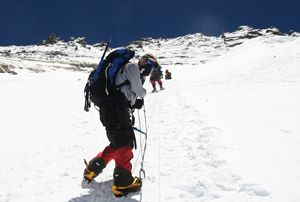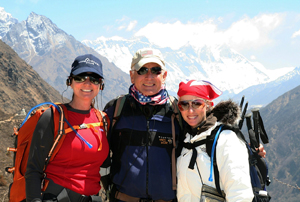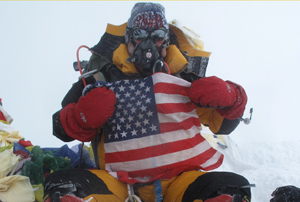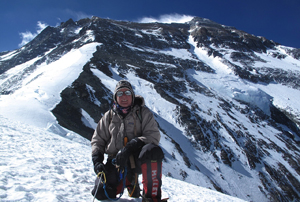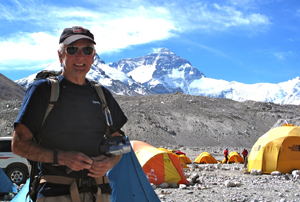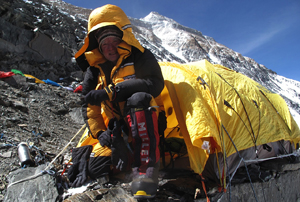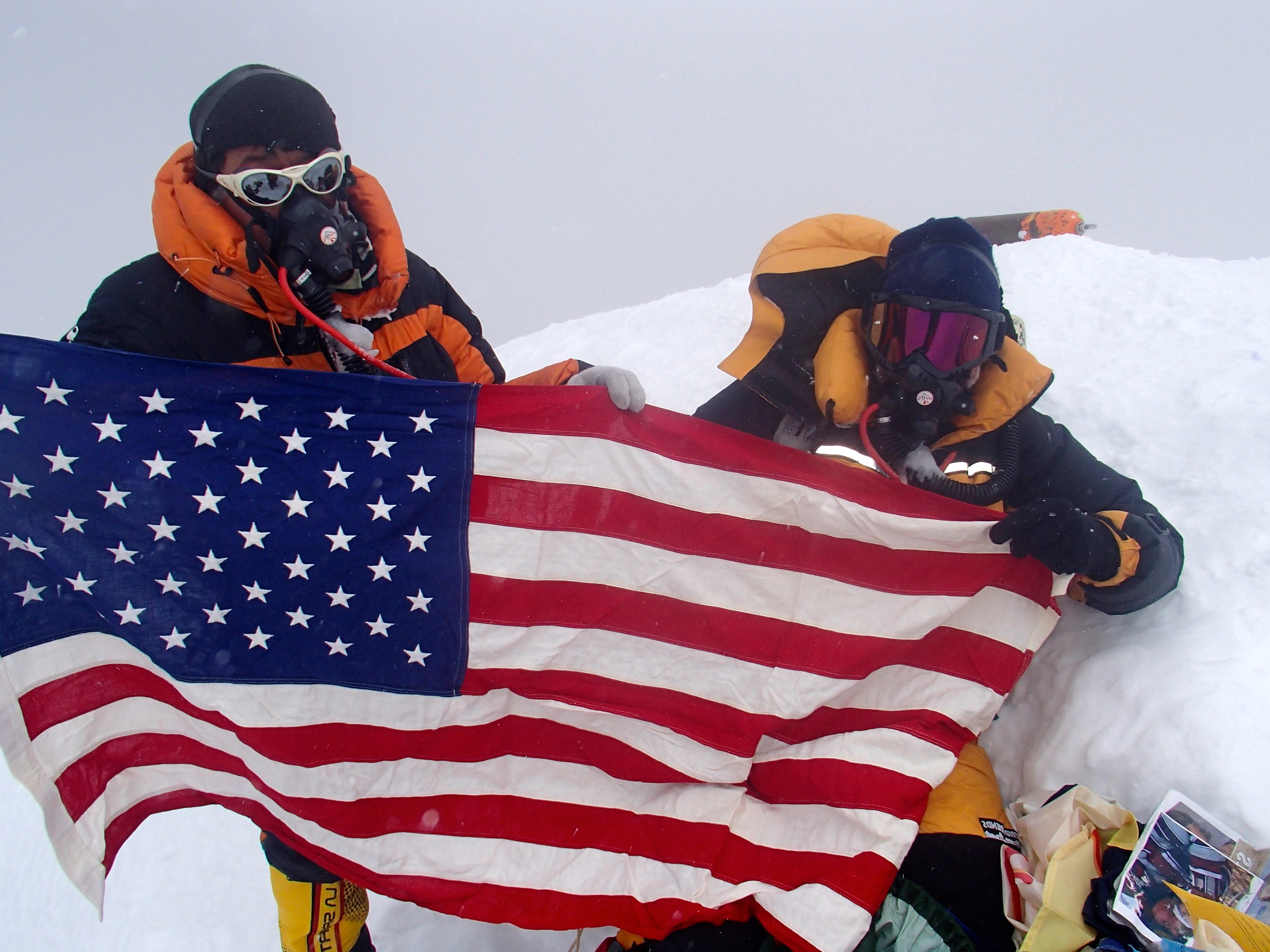Mt. Everest
Mt. Everest is the highest mountain in the world. It is located in the magnificent Himalaya mountain range. Mt. Everest borders two countries. Its South flank is located in Nepal and its North flank is located in Tibet. I summited Mt. Everest from the South side on May 23, 2009 becoming the oldest American to reach the summit and return alive. I attempted to summit Mt. Everest from the North side in 2010, 2011 and 2012. In all of these attempts, I reached the Northeast Ridge, less than 1,000 feet from the summit, before I turned around. I turned around in 2010 at the Second Step because of bad weather and fatigue. In 2011, I turned around at the First Step because of a miscalculation of oxygen requirements by my Sherpa. In 2012, I turned around at the Second Step because of bad weather. I summitted Mt. Everest from the North side on May 25, 2014, becoming the oldest person living outside of Asia to reach the Top of the World. Photos and video of all of these climbs can be found in the Gallery.
The main climbing routes on the South and North sides of Mt. Everest are quite different. In a South side climb, the trip begins with a 35-mile trek to Base Camp from the tiny village of Lukla nestled in the mountains. Lukla is accessed by a short, but extremely dangerous, flight on a twin engine airplane that departs from the airport in Kathmandu. It has been said that the airport in Lukla is the most dangerous in the world. The views of Mt. Everest are obstructed by surrounding mountains for most of the trekking and climbing route. A South side climb begins with an ascent from Base Camp, located at 17,600 feet, up the treacherous Khumbu Icefall. There are 4 camps on the mountain, with high camp located on the South Col at 26,000 feet. In a South side climb, the route to the summit is more direct and steep than the route to the summit on the North side. This makes the climbing somewhat more difficult, but it also means that a climber in trouble can get down to safety much quicker on the South side. Also, helicopter evacuations are possible from Base Camp and Camp 1 above the Khumbu Icefall, which is not the case on the North side.
Here is the North side route. In a North side climb, Base Camp in Tibet, often referred to as “Chinese Base Camp,” is accessed by land rover from Kathmandu or by a flight to the capital city of Lhasa. In either case, vehicles can drive directly into Base Camp. The views of Mt. Everest are unobstructed and magnificent for the entire expedition. From Chinese Base Camp at 17,056 feet, climbers ascend to Advance Base Camp at 21,000 feet. There is no icefall on the North side. Most of the time is spent at ABC. So, North side climbers need to deal with the rigors of high altitude much longer on the North side than on the South side. There is also no helicopter evacuation anywhere on the mountain on the North side. If a climber gets into trouble, he/she needs to get down to Chinese Base Camp for evacuation by vehicle to the nearest hospital. Also, the weather tends to be worse on the North side, most especially the winds, which can reach hurricane force. I experienced the full force of this weather during my descent from the summit in 2014. There are 3 camps on the North side, with high camp located at 27, 224. As noted above, climbers spend more time at high altitude on the North side, which takes a terrible toll on the body and makes a rapid descent more problematic.
Which side is more difficult? They are both extremely difficult, each in its own unique way, but I believe the North side is much harder to climb than the South side because of the time spent at high altitude, the weather and the distance travelled to reach the summit. Here is a video showing both the South and the North approaches to the summit of Mt. Everest.

